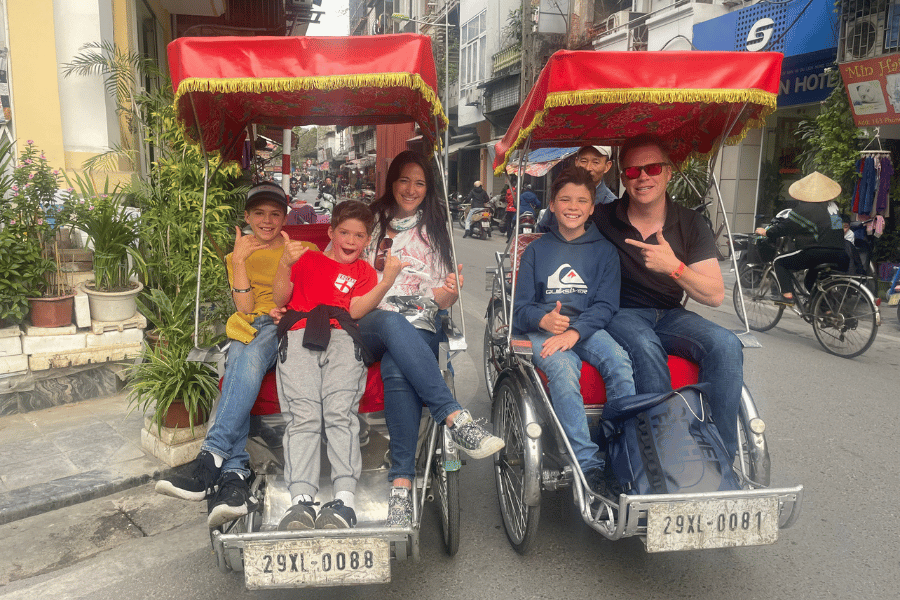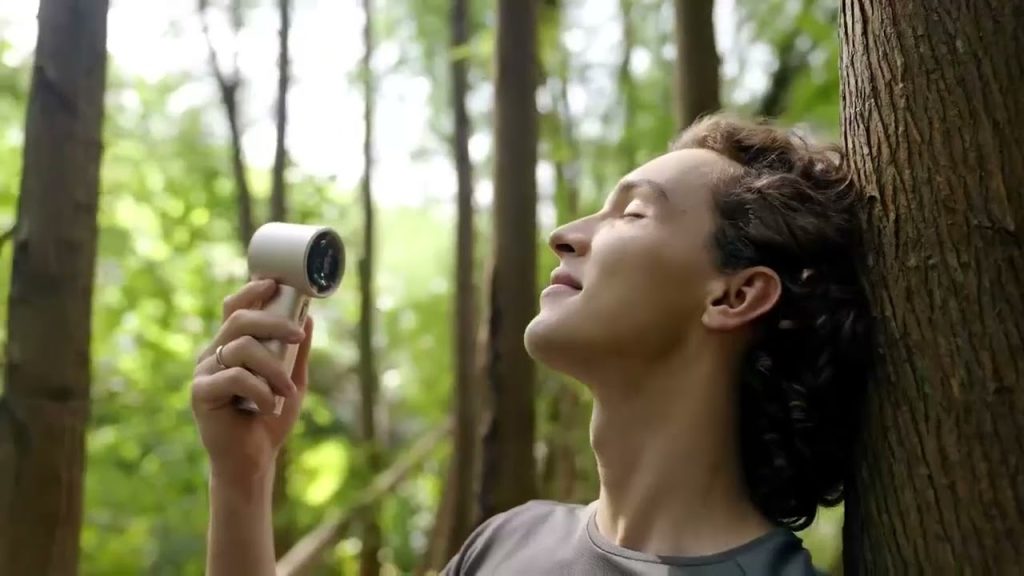Picture this: you’re exploring the ancient streets of Hanoi, the sun is blazing, the air feels like a thick blanket, and all you want is a breath of fresh air – literally. Now imagine reaching into your bag, pulling out a compact turbo fan, clicking it on, and instantly feeling that breeze hit your face. Game changer, right?
Welcome to traveling in Vietnam, where heat and humidity are real – and where a handheld turbo fan might just become your MVP.
The Vietnam Weather Reality Check
Vietnam’s beauty is next level – think rice terraces, lantern-lit towns, floating markets – but so is its heat. From May to September, temperatures often climb above 38°C (100°F), and humidity? Through the roof. It’s the kind of humidity that fogs your sunglasses the moment you step outside.
Especially for travelers coming from cooler or drier climates, the weather can hit like a freight train. Even locals who are used to the heat will straight-up admit that some days are borderline unbearable.
And while no one books a trip to Vietnam just to hide in an air-conditioned hotel, the midday sun can seriously drain your energy and kill your sightseeing vibe.
That’s where this tiny but mighty tool comes in.
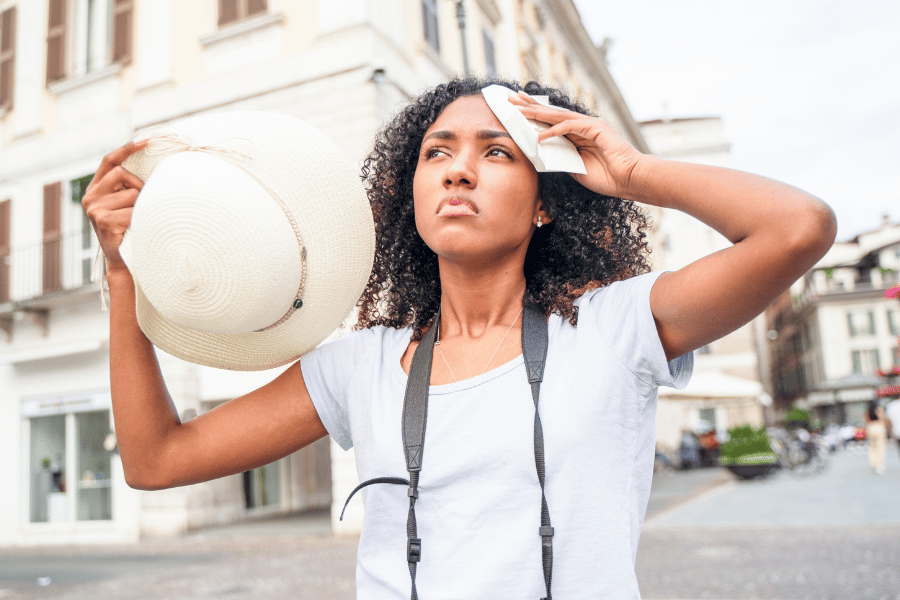
So, What Is a Handheld Turbo Fan?
In short: it’s your personal, portable breeze – and yes, it deserves more hype.
Unlike those sad little dollar-store fans that barely move the air, turbo fans are built different. They offer stronger airflow (thank you, engineering), usually come with 3–5 speed settings, and are USB-rechargeable. Most models weigh only 200–300 grams and fit easily into a crossbody bag or backpack. Some even double as power banks, have built-in tripods, or can be clipped onto a stroller – true multi-taskers. Honestly, it’s giving life hack energy.
You can find some solid options online:
Or if you’re already in Vietnam, check local stores like Cellphones, An Khang, or even VinMart – fans are usually cheaper than buying abroad.
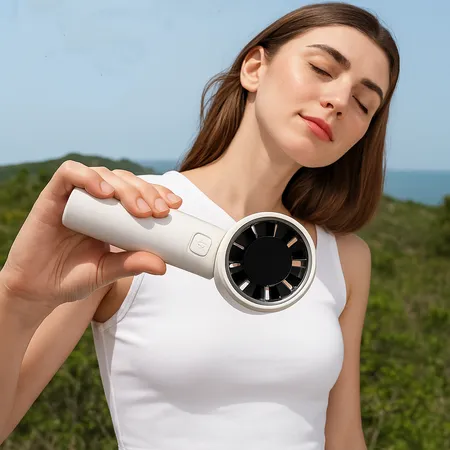
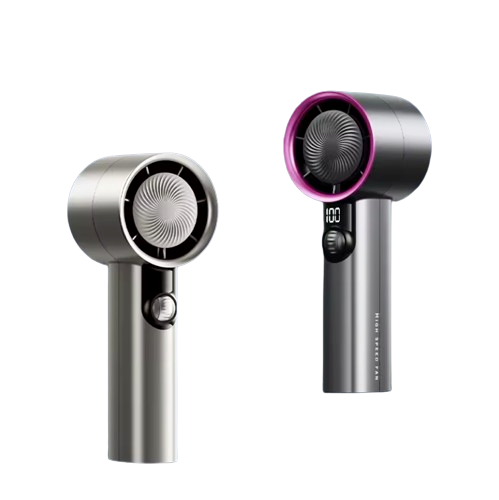
Travel Pro Insight: Lynn Nguyen Weighs In
We asked Lynn Nguyen, a travel expert with over 6 years in the industry and passport stamps from 30+ countries, what she thought.
- “Whether you’re walking through Hội An’s old town, hiking in Sapa, or cruising through the Mekong, having a turbo fan gives you that boost of comfort you didn’t know you needed,” she shared.
- “I’ve had clients cut their day short or skip activities altogether just because of the heat. A fan seems basic, but it helps people last longer, explore more, and enjoy their trip without feeling drained.”
Lynn even brings extra fans for her guests during guided tours in summer. That’s how much she believes in them.

Ms. Lynn Nguyen – Travel Expert
Real Talk: What’s It Like Without One?
Let’s break it down with a side-by-side:
Without a Fan:
You’re sweating through your shirt by 10AM.
Midday? You’re hiding in the nearest café or museum just to escape the sun.
That temple tour? Skipped. That food stall? Too hot to stand in line.
With a Fan:
Constant airflow keeps your body temp in check.
You can actually enjoy walking tours, street food hunts, and outdoor markets.
Your travel crew will probably ask to borrow it (maybe get two).
But Is It Really That Necessary?
Fair question. Is a turbo fan a bit extra? Maybe. But if you’ve ever tried trekking through the Cu Chi Tunnels, squeezing into a packed train, or wandering the maze-like alleys of Saigon at noon in July – you already know the answer. This isn’t just about luxury; it’s about keeping your cool so you can stay out there longer and do more. Also, when you’re standing in a crowd at a night market or stuck in traffic on a motorbike tour – airflow isn’t just comfort. It’s survival.
How to Pick the Right One
Not all handheld fans are built the same. Here’s what Lynn recommends looking for:
- Powerful airflow – Look for fans over 5W
- Adjustable speeds – At least 3 modes
- Battery life – 2000mAh or more (enough for 4–8 hours)
- Foldable or standable – Flexibility for hands-free use
- Noise level – The quieter, the better
Popular brands travelers trust: Jisulife, Xiaomi, Baseus, and EasyAcc.
Pro tip: You can buy these online, but they’re also available in Vietnam at electronics stores or even some convenience stores – often for cheaper than overseas prices.
Lynn’s Travel Hack List
Before you pack your bags, here’s what Lynn suggests:
Charge overnight so it’s ready for a full day
Pack a USB cable (most fans use Type-C or micro-USB)
Bring a second fan if you’re traveling with kids or older family members – they’ll thank you
Use it while waiting at airports, train stations, or even in hotel lobbies with weak AC
Destination tie-in: Where a fan really helps
Imagine wandering through the narrow lantern-lit streets of Hoi An in the late afternoon, the sun dipping low but still radiating heat that clings to your skin. Without a handheld turbo fan, even a leisurely stroll past centuries-old houses and riverside cafés can quickly turn into a sweaty ordeal. With a fan in hand, however, the evening transforms. You can take your time exploring the vibrant markets, tasting local delicacies, and pausing to admire the glowing lanterns reflecting off the river, all while staying comfortable and refreshed.
Further north, Sapa’s terraced hills offer breathtaking views, but hiking under the midday sun can be draining. A portable fan can make a world of difference, keeping you cool as you navigate winding trails and encounter local hill tribe communities. Even in the Mekong Delta, where boat trips meander through bustling canals and floating markets, the fan becomes a silent companion, allowing you to soak in the vibrant scenery without the oppressive humidity slowing you down.
In Hanoi and Ho Chi Minh City, where city streets pulse with energy, and crowds gather at night markets or street food stalls, a turbo fan lets you fully embrace the sensory adventure. You can linger at a street-side pho stall or browse handcrafted souvenirs without feeling the urge to retreat into an air-conditioned refuge. Across Vietnam, whether you’re trekking, cruising, or wandering through ancient towns, the handheld fan doesn’t just provide relief – it enables you to experience more, linger longer, and create memories unburdened by the heat.
Want More Local Travel Tips?
The best thing about visiting Vietnam is how many off-the-beaten-path experiences you can find – if you’re traveling with the right people. We always recommend going with Vietnam local tour operators who actually know the terrain and can help you avoid crowds, get insider access, and plan your days around the weather.
Not sure where to start? You can explore options from some of the best Vietnam local tour packages – or better yet, check out our very own team of travel experts here. We’ve been crafting personalized Vietnam adventures for years, and we’d love to help you plan one that’s both exciting and comfortable.
